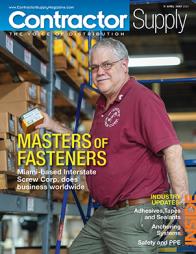Cintas shares fire safety tips during Fire Prevention Week
Free online emergency preparedness training available through October.
In recognition of Fire Prevention Week, Cintas today issued a list of fire protection and safety tips to help businesses prevent fires and be prepared in the event of a fire.
During the month of October, Cintas will offer free online Fire Prevention Safety Training to help companies develop effective fire prevention methods and educate employees about how to calmly and effectively deal with fires.
The Cintas First Aid Division offers over 200 online and classroom training courses such as CPR, automatic external defibrillator (AED), first aid, bloodborne pathogens, hazard communications and personal protective equipment.
"According to the National Fire Prevention Association, one structure fire occurred every 66 seconds in 2009 causing $10.8 billion in property damage," said Mark Olson, Manager, Cintas Safety Training and Compliance Products. "In addition to preventative fire measures, Business operators should have a well-rehearsed fire safety action plan. This is done through strong organizational training to ensure all members know what to do during critical moments."
To protect against the threat of damage, injury and lost business, Cintas recommends companies follow these core guidelines to establish an effective fire prevention strategy:
- Develop a building layout diagram. Make sure the building layout is posted on every floor with exits clearly marked. Everyone should review the layout and know the location of the nearest exits.
- Identify the exits. In addition to knowing the nearest exit from the daily work area, everyone should know at least two ways out no matter where they are in the building.
- Train employees. OSHA standards require employers to review parts of the fire prevention plan with employees that are necessary for self protection. Training programs should include knowing the protocol for fire extinguisher use in the event of a fire.
- Have an emergency action plan (EAP) in place and practice it. Perform unannounced fire alarm drills with employees so everyone is aware of the exit strategy in the event of a fire. Identify a safe meeting area outside the building where a headcount can be performed.
- Conduct routine inspections. Make sure fire extinguishers and emergency backup lights have been checked and tested by a trained fire prevention expert. All fire extinguishing equipment should be serviced in accordance with the manufacturer's recommendations. Conduct daily facility inspections to remove any fire hazards.
- Regularly check evacuation exits. As a part of the fire prevention plan, routinely check that all doors leading out of the building open easily and have not become obstructed. All exit sign lighting should also be checked so that signs are clearly visible in case of a fire.
- Inspect sprinklers and smoke alarms. Make sure smoke alarms have been inspected and tested by a trained expert to give proper warning in the event of a fire.
- Ensure equipment and surroundings are clean and updated. Establish strict cleaning procedures in ventilation systems to prevent grease buildup.
- Be aware of fire hazards in common kitchen areas. Limit storage of combustible materials in and around cooking areas that could contribute to spread of fire. Make sure adequate clearance exists between cooking equipment to avoid heat buildup.
For more information on Cintas' free online training course for October, click here.















